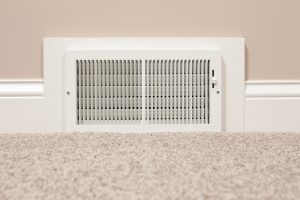 Winter, and the first real cold snap, is still not yet upon us but it’s usually a good idea to start up and run your furnace or heater this time of year. Whether you’ve just purchased your furnace or are hoping to coax one last season out of an older one, a test run is always a good idea in these relatively mild weeks before winter begins in earnest.
Winter, and the first real cold snap, is still not yet upon us but it’s usually a good idea to start up and run your furnace or heater this time of year. Whether you’ve just purchased your furnace or are hoping to coax one last season out of an older one, a test run is always a good idea in these relatively mild weeks before winter begins in earnest.
The purpose of a test run is to check your furnace for any signs of trouble: something that may affect its performance over the winter and perhaps even trigger a breakdown. You should never attempt to diagnose a problem with your furnace, much less correct it. Furnaces contain gas fuel lines, burners and other potentially dangerous components that require formal training and licensing to properly treat. But that doesn’t mean you can’t spot the signs that something is wrong. A test run is the ideal way to check for any problems.
There are a few tips to ensure that your test run is as effective as you need it to be. Start the test in the morning, when the temperatures are coolest and the heater can run for the longest. Raise your thermostats by 5°F—warmer than you normally would set it—then turn it on and let it run. You may get a slight odor as the heat exchanger in your system gets hot for the first time, but that’s normal.
While the heater runs, check and listen for any signs that something is off. In general terms, this means anything that doesn’t match what you perceive to be the heater’s normal operations. More specifically, look for any of the following common signs of trouble:
- Low Air Flow. Problems with the fan motor or clogs in the ducts will lower the flow of air through your system and force your furnace to work harder than it should to warm your home.
- Cooler Air. Cold air is always a sign of trouble, but you should also be concerned if the air coming out of your vents is warm, just not quite as warm as you’d expect.
- Short Cycling. This is the process of the heater shutting off and turning on again a short while later, cycling on and off throughout the day. This is very hard on the heater because it uses most of its power starting and stopping instead of simply running.
- Strange Noises. This can mean anything from hums, to groans to whistles to bangs. The only common factor is that they don’t match the sounds your heater normally makes. In most cases, they will start and stop with the starting and the stopping of the heater.
If you spot those signs while the heater is running, turn it off and summon our team right away. We are months away from scheduling our Planned Service Heater Tune-ups, but we are just a phone call or click away if your heater doesn’t work properly on your test run: or at any time this winter when you need it.
Sierra Pacific Home & Comfort, Inc. serves homes throughout the Sacramento, CA area, so call us today!
